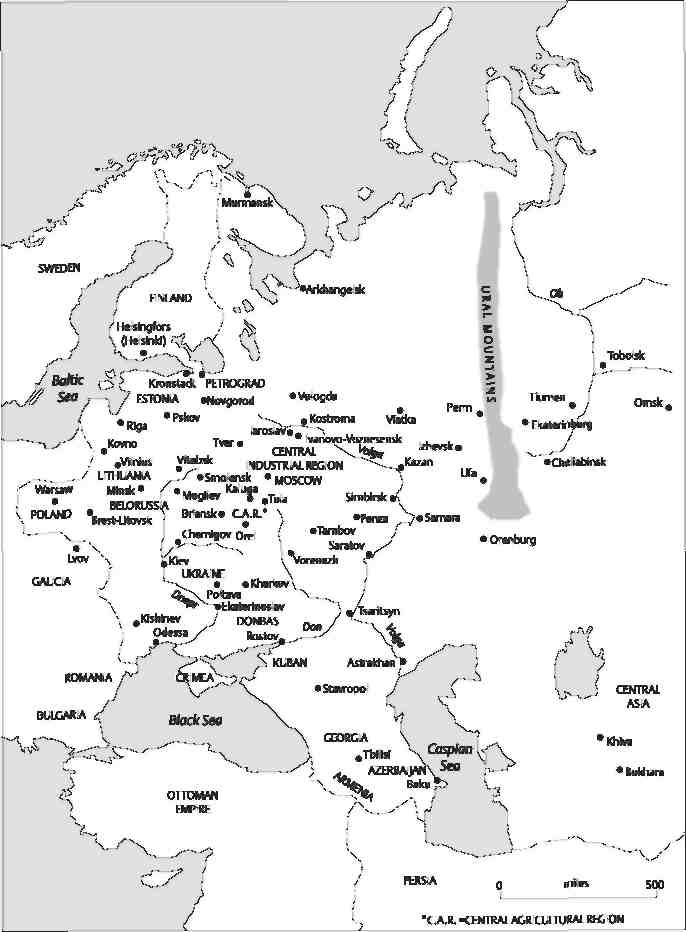The Russian Revolution: A Very Short Introduction
'Written with verve, this book is a triumph of compression: it will immediately establish itself as the best short introduction to
'Written by one of the very best historians of early 20th-century Russia, Steve Smith's
S. A. Smith
THE RUSSIAN REVOLUTION
A Very Short Introduction
OXFORD
UNIVERSITY PRESS
Introduction
The Russian Revolution of 1917 saw the overthrow of the tsarist autocracy in February and the seizure of power by the Bolshevik party in October. The Bolsheviks proceeded to establish the world's first Communist state on a territory covering one-sixth of the globe, that stretched from the Arctic to the Black Sea, from the Baltic to the Far East. Their revolution proved to be the most consequential event of the 20th century, inspiring communist movements and revolutions across the world, notably in China, provoking a reaction in the form of fascism, and after 1945 having a profound influence on many anti-colonial movements and shaping the architecture of international relations through the Cold War. This book sets out to provide for the reader coming to the subject for the first time an analytical narrative of the main events and developments from 1917 to 1929, when I. V. Stalin launched his 'revolution from above', bringing crash industrialization and the forced collectivization of agriculture to the Soviet Union. It seeks to explain how and why revolution broke out in 1917; how the Bolsheviks came to power and established a regime; and how, finally, that regime evolved into a gruesome form of totalitarianism. The book attends to the ideals and aspirations that animated the contenders for power and the issues and conflicts with which they had to grapple. But it seeks to go beyond politics narrowly defined. The October Revolution set out to do nothing less than destroy an entire social system and replace it with a society superior to anything that had existed hitherto in
human history. The book explores the far-reaching reverberations of that project on the economy, peasant life, work, structures of government, the family, empire, education, law and order, and the Church. More particularly, it explores what the revolution meant - the hopes it inspired and the disappointments it brought - fordifferent groups such as peasants, workers, soldiers, non-Russian nationalities, the intelligentsia, men and women, and young people. The perspective is that of the social historian, but the central concern is political: to understand how ordinary people experienced and participated in the overthrow of one structure of domination and how they experienced and resisted the gradual emergence of a new one. Each chapter is punctuated with a couple of quotations from documents that have come to light since the fall of the Soviet Union; they are intended to give a flavour of the range of responses of those who found themselves caught up in the revolution.
с о
g In 1991 the state to which the Russian Revolution gave rise collapsed, e allowing historians to see the history of the Russian Revolution in its jg entirety for the first time. That shift in perspective, together with
2
Readers should note that uptoi February 1918 dates are given in the old style. On that date the Bolsheviks changed from the Julian calendar, which washdays behind that of the West, to the western calendar. The October seizure of power (24-5 October 1917) thus took place on 6-7 November 1917, according to the western calendar.
Warmest thanks go to Cathy Merridale and Chris Ward who read the manuscript and offered characteristically astute and helpful comments. Needless to say, responsibility for any errors remains my own.

Map 1. European Russia on the eve of 1917
Chapter 1
From February to October
On 23 February 1917 thousands of female textile-workers and housewives took to the streets of Petrograd, the Russian capital, to protest about the bread shortage and to mark International Women's Day. The following day, more than 200,000 workers were on strike and demonstrators marched from the outlying districts into the city centre, hurling rocks and lumps of ice at police as they went. By 25 February, students and members of the middle classes had joined the protesters, who now bore placards proclaiming 'Down with the War' and 'Down with the Tsarist Government'. On 26 February, soldiers from the garrison were ordered to

